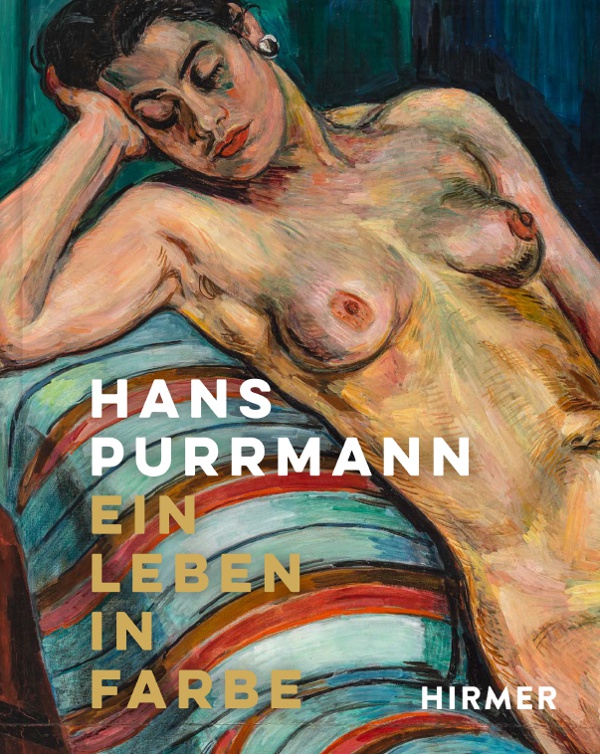Hans Purrmann. A life in color
Hermann Stenner Art Forum, Bielefeld
February 14 – August 15, 2021
The painter Hans Purrmann (1880-1966) is one of the most important colorists in 20th century European art history with his colorful works. In the course of a life spent in stages between his native Palatinate, Munich, Berlin, Paris, Rome and Switzerland, he developed into a painter of outstanding stature with far-reaching connections. His participation in the legendary Sonderbund exhibition in Cologne in 1912 through to “documenta I” in Kassel in 1955 marks the wide-ranging influence of Purrmann, who left behind an extensive life’s work of around 3,000 paintings, watercolors, drawings and numerous graphic works.
With around 110 paintings, the Kunstforum Hermann Stenner in Bielefeld now documents the long career of the artist who, despite the great influence of his teacher and long-time friend Henri Matisse, found his own unmistakable artistic expression.
The Palatinate Purrmann, who was born in Speyer in 1880 and died in Basel in 1966 at a ripe old age, was not born to become a cosmopolitan European whose life would take him via Karlsruhe, Munich, Paris and Berlin to Italy and finally to Switzerland. Nor could it have been foreseen that the artist, who worked representationally throughout his life and was committed to the classical genres of nudes, landscapes, portraits and still lifes with almost serial persistence, would experience a rediscovery as a “colorist of modernism”, which was further fueled by his long-standing reception as a student of Matisse.
Purrmann began his studies at the Munich Academy under Franz von Stuck. After moving to Berlin, where he studied Liebermann’s Impressionism, he went to Paris in 1905. It was precisely at this time that the artists’ group “Die Brücke” was founded in Dresden and led German art into the modern age with its expressionism. The Fauvism of France, especially the work of Henri Matisse, accompanied the painter throughout his life and is visible in the architecturally structured compositions, the use of ornamental-abstract surfaces and the use of bright, often unmixed colors.
After nine years in Paris, the artist, who was reviled in Germany as a “Frenchman”, had to give up his apartment there at the beginning of the First World War. He moved to Berlin with his wife, the painter Mathilde Vollmoeller, where he found a new center of life and soon became an important voice at the heart of the art scene: in 1919, Purrmann was accepted into the Prussian Academy of Arts at the suggestion of fellow painters Max Liebermann and Max Slevogt, and many of his works found their way into museums and private collections.
However, when the National Socialists came to power, Purrmann’s social, political and financial situation became precarious: the Villa Romana in Florence, which belonged to the German Artists’ Association and which he managed on a voluntary basis for eight years, became a refuge for the painter, who was reviled as “degenerate”. He lived there in seclusion with his family and was able to offer some of his artist friends who were persecuted by the National Socialists a safe haven. His latent threat culminated in the arrest of the politically suspect painter by the Italian police on the eve of Hitler’s visit to his fascist brother state.
The portraits, still lifes and landscapes created in these years do not reveal the existential threat to their creator: The provocative, large-format “Reclining Nude” from 1940, the sun-drenched views of the Villa Romana and its surroundings as well as the lush still lifes rather seem to evoke Matisse’s programmatic title “Luxe, Calme et Volupté”, a life-affirming founding document of Fauvism.
The death of his wife and the increasingly threatening theater of war in Italy prompted Purrmann to flee to Switzerland, where he created a veritable oeuvre for his old age in the two decades that remained to him. Although his range of motifs became ever narrower due to his illness, the works created at Casa Camuzzi in Montagnola above Lake Lugano show his tireless creative energy. A late self-portrait from 1961 also bears impressive witness to this: the work shows the slow fading of a life in translucent, delicately placed, short brushstrokes and in a skeptical, serious facial expression, which also reveals Purrmann’s strength and resilience in the face of the times.
Hans Purrmann died in Basel on April 17, 1966 at the age of 86 and was buried next to his wife Mathilde in Langenargen on Lake Constance.
The exhibition features loans from renowned private collections as well as the Purrmann House in Speyer and the Langenargen Museum on Lake Constance and was created in close cooperation with Dr. Felix Billeter, Hans Purrmann Archive, and Prof. Dr. Christoph Wagner, University of Regensburg.
The exhibition catalog with texts by Dr. Felix Billeter, Christiane Heuwinkel and Prof. Dr. Christoph Wagner is published by Hirmer Verlag.
208 pages, illustrations of all works, documentary photos
Price: 29,90 €
Hermann Stenner Art Forum
Obernstraße 48
33602 Bielefeld
https://kunstforum-hermann-stenner.de/ausstellungen/ausblick/hans-purrmann-ein-leben-in-farbe/

